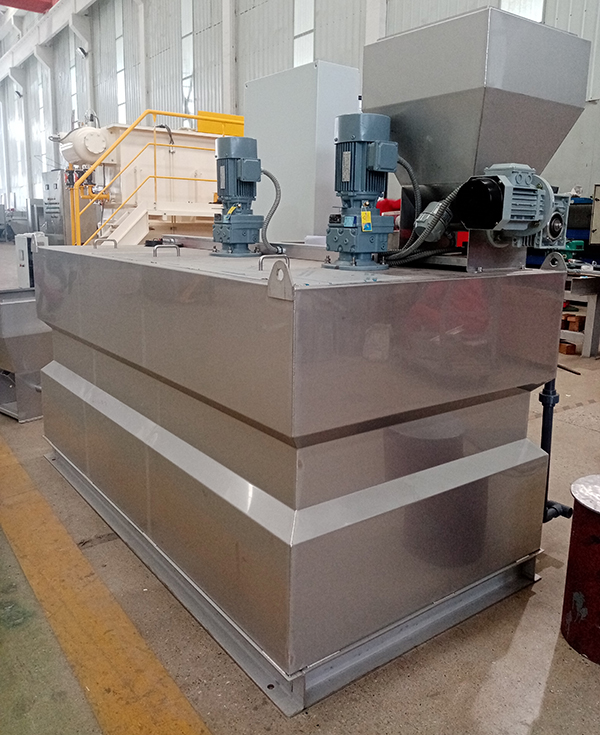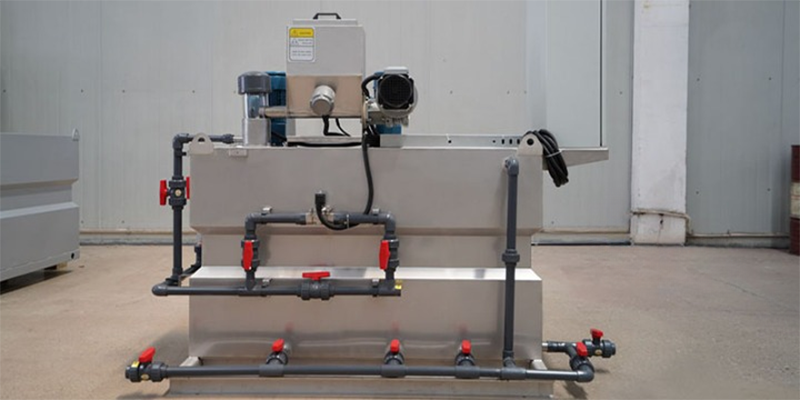A dosing system is a device used to accurately measure and dispense specific quantities of substances or materials. These systems are commonly employed in various industries such as pharmaceuticals, chemical manufacturing, water treatment, food and beverage production, and more.
The primary purpose of a dosing system is to ensure precise control over the amount of substance being delivered, whether it’s a liquid, powder, or gas. This precise dosing is critical for maintaining product quality, process efficiency, and safety standards.
Dosing systems can vary significantly in complexity and design depending on the application requirements. Some dosing systems are manual, where an operator manually adjusts settings to dispense the desired amount of substance. Others are automated, utilizing sensors, pumps, valves, flow meters and control systems to precisely measure and dispense materials according to predetermined parameters. They can be customized to suit specific applications and may range in complexity from simple, standalone units to integrated systems controlled by centralized automation platforms.
Auto dosing systems are commonly used in various industries where precise dosing of chemicals, additives, or other substances is necessary for production processes, water treatment, or other applications.
Several advantages of auto dosing systems over manual dosing methods
Accuracy
Auto dosing systems are designed to deliver precise quantities of substances consistently, reducing the risk of errors associated with manual dosing.
Efficiency
By automating the dosing process, these systems can operate continuously or at predetermined intervals, optimizing production efficiency and reducing downtime.
Safety
Automated dosing systems can enhance safety by minimizing direct contact with potentially hazardous chemicals or substances, reducing the risk of exposure to operators.
Control
Auto dosing systems typically incorporate sensors and control mechanisms to monitor and adjust dosing parameters in real-time, ensuring that dosing remains within desired ranges.
Flexibility
These systems can be programmed to accommodate varying dosing requirements, allowing for adjustments based on changing process conditions or production needs.

How does the auto dosing system work?
The operation of an auto dosing system involves several steps, typically including measurement, control, and dispensing of substances. While the specific details may vary depending on the application and design of the system, the general process can be outlined as follows:
Initialization and Setup
The auto dosing system is initialized and set up by inputting the desired dosing parameters such as the quantity of substance to be dispensed, dosing schedule (if applicable), and any other relevant settings. This can often be done through a control interface or software.
Monitoring
Once the system is set up, it begins monitoring relevant process parameters such as flow rate, pressure, level, or concentration of substances in the system. This is typically achieved using sensors or probes placed at strategic points within the system.
Control and Feedback
Based on the data collected from monitoring, the control system of the auto dosing system determines the appropriate dosing actions required to maintain the desired dosing parameters within predefined limits. This may involve adjusting the flow rate, opening or closing valves, or activating dosing pumps.
Dosing
When the control system determines that dosing is necessary, it triggers the dosing mechanism (such as a pump or valve) to dispense the appropriate quantity of substance into the process stream or container. The dosing action is typically carried out with precision to ensure accurate delivery of the required amount.
Feedback and Adjustment
After dosing, the system continues to monitor process parameters to verify the effectiveness of the dosing action. If necessary, the control system may make further adjustments to optimize dosing accuracy or maintain process stability.
Maintenance and Calibration
Periodic maintenance and calibration of the auto dosing system are essential to ensure its continued reliability and accuracy. This may involve tasks such as cleaning components, replacing worn parts, and calibrating sensors or instruments.
Upgrade your dosing operations with our cutting-edge auto dosing system product and innovative chemical dosing systems solution, now conveniently accessible on our website. Experience unparalleled convenience and precision in your processes starting today!



[…] Automated dosing systems equipped with sensors, actuators, and feedback loops enable real-time adjustments, optimizing dosing parameters and enhancing treatment performance. […]